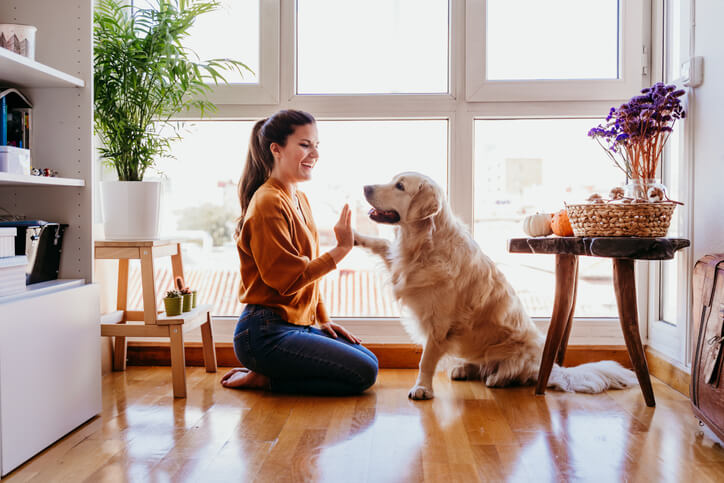The big day is finally here. You’ve found a new home, packed up all of your belongings, and now you’re finally ready to settle into the new place. While it may be an exciting life change for you, your furry pal has no idea what’s going on. Oftentimes, a move to a new home can lead your dog to exhibit anxious and destructive behaviors.
Moving is stressful enough, but moving with a dog can be even more so. Let UF Mover Guys help take away some of that burden. Contact us for more information about our professional moving services.
Make It Safe
Before you allow your dog into any area of your new home, make sure it’s pet-proofed. Check fences for areas where they might be able to squeeze through and ensure that there are no safety threats in any room your dog can access, such as cleaning supplies or small choking hazards. If necessary, use gates or a pet playpen until you can address this. Even if your pet is trained to walk without a leash, make sure to leash them until they understand where they can and can’t go in the yard and neighborhood.
Keep It Familiar
Changing homes is a significant shift in a dog’s life, so keeping everything else as routine as possible can help make them feel more comfortable. As soon as you can, arrange their bed, crate, and toys to a similar layout as you had before. Try to feed and walk them at the same pre-move times of the day as well. Even avoiding purchasing new items for yourself for a while, such as furniture, can help them feel more secure in their new environment. On the other hand, buying new toys for them, especially ones that allow them to chew, can help curb destructive behavior.
Get Their Energy Out
Exercise is a great way to combat pet anxiety. Making sure that you’re giving them an appropriate amount of exercise for their age and breed can make all the difference. Exercise can include going for walks around your new neighborhood or yard, playing fetch, tug-of-war, or other forms of playtime with you. Keeping them active will help distract them from all the changes and help them sleep better, reducing the likelihood of anxious behavior.
Give Lots Of Love
Reassuring your pet with plenty of attention can help them feel better. You likely already know what type of attention your pet responds to best, but try a variety of tactics to keep it fun for both of you. Favorite treats, easy training sessions, plenty of belly rubs, playful floortime, letting them nap near you, and keeping them nearby when they’re awake can all have a positive effect on your pet’s transition to the new home.
Stay With Them
When possible, stay at home with them for the first couple of days. Your presence will have a calming effect and signal to them that everything is okay. While it’s not always possible to take time off of work or school, even limiting the amount of time you’re away from home on social engagements can also help. As a side bonus, this will give you more time to unpack and settle into your new home so life can go back to normal sooner for both you and your furry pal.
Be Patient
Above all else, be patient with your dog. They’ve been ripped away from the life that they were comfortable and familiar with, and have no idea why. Showing them compassion and an extra bit of patience can go a long way toward helping them accept their new home. If your dog regresses in training, such as having an accident in the home or tearing up furniture, remember that this is their way of communicating with you. Use love and understanding to communicate back rather than getting frustrated or angry.
Professional movers can allow you to spend more time addressing your pet’s needs without becoming overwhelmed. Check out our other moving tips to make it as stress-free as possible!
